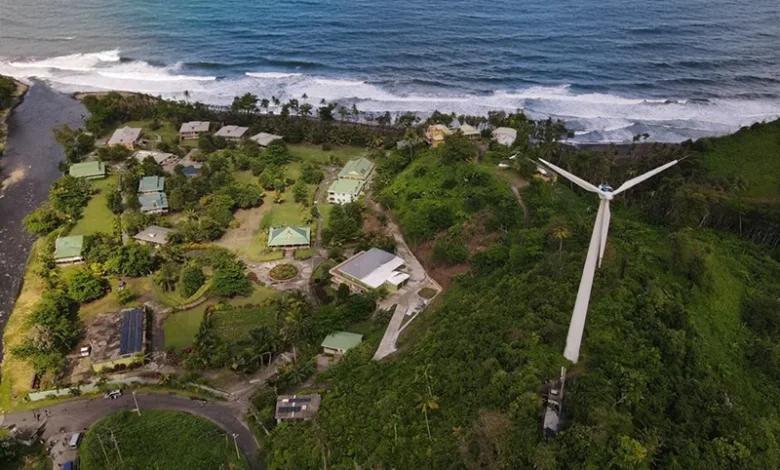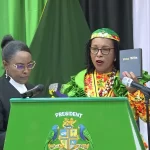Dominica’s Green Economy

Dominica’s Green Economy is at the heart of the country’s commitment to sustainable development, climate resilience, and environmental conservation. As a small island nation highly vulnerable to climate change and extreme weather events, Dominica has made significant strides in renewable energy, conservation policies, and green finance to ensure long-term economic and ecological sustainability. With investments in solar, hydro, and geothermal energy, the country is positioning itself as a leader in sustainable development in the Caribbean. These efforts align with global climate goals, as Dominica seeks to reduce its carbon footprint while fostering economic growth through sustainable industries and green investment strategies.
Renewable Energy Initiatives
Dominica has been making significant progress in transitioning towards renewable energy, recognising its importance for economic development and environmental preservation. The country’s heavy dependence on imported fossil fuels has historically contributed to high energy costs and carbon emissions. To combat this, Dominica has prioritized hydropower, geothermal energy, and solar power as part of its commitment to achieving 100% renewable energy generation. These efforts are not only intended to reduce greenhouse gas emissions but also to lower electricity costs and enhance energy security in the face of increasing global fuel prices.
Hydropower
Hydropower has been a key component of Dominica’s renewable energy strategy for decades. As of recent reports, approximately 28% of the country’s electricity is derived from hydropower sources. Dominica’s mountainous terrain and high annual rainfall provide ideal conditions for hydroelectric generation. The island operates three hydroelectric plants, which have a combined installed capacity of 7.6 megawatts (MW). These facilities are operated by Dominica Electricity Services Ltd. (DOMLEC), the state-owned power company. Hydropower has been crucial in reducing Dominica’s reliance on imported fossil fuels, contributing to a more stable and sustainable energy sector.
Geothermal Energy
Dominica’s geological location places it at the boundary of the Caribbean and North American tectonic plates, providing tremendous geothermal energy potential. The Geothermal Power Company of Dominica has spearheaded major projects, and in December 2024, the Caribbean Development Bank approved a USD 34.8 million loan for the construction of a 10 MW geothermal power plant. This project is expected to:
- Reduce electricity costs by at least 40% once fully operational.
- Cut carbon emissions by 50,000 metric tons per year.
- Increase the share of renewable energy in Dominica’s energy mix to over 60%.
Once completed, the geothermal plant will be one of the first in the Eastern Caribbean, setting a precedent for sustainable energy use in the region.
Solar Energy
Solar power is another emerging renewable energy source in Dominica, offering significant potential. The country receives an average of 5 kWh per square meter per day, making it ideal for solar photovoltaic (PV) installations. In 2015, a 125 kW solar farm was commissioned in the Kalinago Territory, supporting 145 households and multiple community centers. This project, funded by the European Union at a cost of USD 400,000, was designed to produce 200,000 kWh annually. However, it was destroyed during Hurricane Maria (2017), highlighting the need for resilient solar energy infrastructure in disaster-prone areas.
Policy and Legislative Framework
Dominica has adopted several legislative measures and national strategies to accelerate its green economy transition. These include:
- Nationally Determined Contribution (NDC) – A commitment to reduce greenhouse gas emissions by 45% below 2014 levels by 2030.
- Low-Carbon Climate-Resilient Strategy (2012) – A framework that integrates sustainability into economic development planning.
- Renewable Energy Investment Laws – Policies designed to attract investors to Dominica’s growing geothermal and solar sectors, with USD 20 million already invested.
Environmental Conservation and Climate Resilience
Dominica’s forests cover over 60% of the island, serving as natural barriers against natural disasters. However, Hurricane Maria (2017) devastated 85% of these forests, causing damages estimated at USD 1.3 billion. In response, the government launched a massive reforestation project, which includes:
- Planting 500,000 trees over five years.
- Protecting watershed areas to prevent soil erosion and flooding.
- Enhancing eco-tourism initiatives that promote sustainable land use.
Economic Growth and Green Finance
While Dominica’s transition to a green economy presents challenges, it also offers economic opportunities. The International Monetary Fund (IMF) projected 4.2% real GDP growth for 2025, fueled by investments in sustainable industries. Green financing options, such as the World Bank’s $38.5 million clean energy investment approved in 2024, are expected to accelerate renewable energy development and climate adaptation strategies.
Challenges and the Road Ahead
Despite major strides, Dominica faces several barriers to fully achieving a green economy:
- Infrastructure Vulnerability – Renewable energy projects must be built to withstand Category 5 hurricanes.
- High Initial Investment Costs – Green technology requires substantial upfront funding, though long-term savings are significant.
- Regulatory and Policy Implementation – Stronger enforcement of environmental laws and investment incentives is needed.
Dominica’s determination to become the world’s first climate-resilient nation is evident through its investments in renewable energy, policy frameworks, and conservation efforts. By addressing key challenges and maximizing international support, the country is well-positioned to achieve its sustainability and economic growth goals, securing a greener and more resilient future for generations to come.




